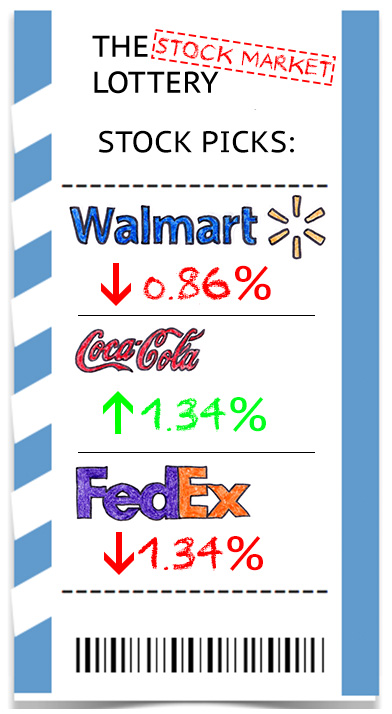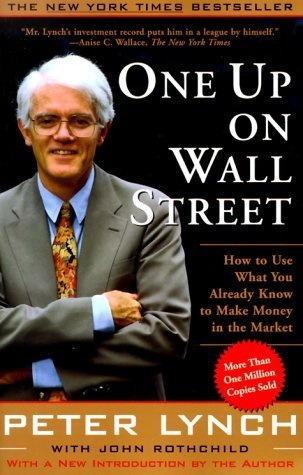Not everyone can take an $18 million fund and turn it into $14 billion in just 13 years. Not unless you’re Peter Lynch that is. He beat the S&P 500 in 11 of those 13 years. Learn the basics of his investing philosophy with us today!
Who’s Your Hero?
Heroes. Hopeful models have Gisele. Little Leaguers have Derek Jeter. Aspiring fool-pitying bad actors have Mr. T.
And financial wizards who dream of seeing themselves immortalized in a how-to course that celebrates their shrewd investing genius have the man, the myth, the $352 million net worth legend known as Peter Lynch.
4 Reasons to Like Love Peter Lynch
- He created his big break during an after-school gig as a caddy, when he smooth talked executives of what would later become the largest mutual fund and financial services group in the world: Fidelity Investments. In fact, the company’s president D. George Sullivan personally suggested that he apply for an internship.
- He ambitiously worked his way up the ladder at Fidelity, until he was named head of the Magellan mutual fund, and increased assets from $18 million to over $14 billion (yes, you read that correctly).
- He outperformed the market in all but two years from 1977 to 1990, with average annual returns of a whopping 29% (yes, you also read that correctly).
- He gives back (and then some) through the Lynch Foundation, Fidelity Charitable Gift Foundation and other charitable trusts.
Your Heroic Journey Awaits
Peter Lynch’s journey from caddy to investing superhero is marked by a philosophy and approach that YOU’RE going to learn in this course. Will you achieve net worth of $352 million? You’ll never know until you try. Dream big. And prepare to get your Lynchian Strategy On.
Lynchian Strategy: Do Your Research
“Stocks aren’t lottery tickets; there’s a company attached to every share”

Remember your 11th grade teacher – yeah, her – who told you (over…and over…and over again) that good research is the key to getting an A+?
Well, she would loved Lynch, because he says the same thing – except instead of an A+, he’d promise you have something a bit more compelling. Like a yacht. Or a mansion. Or…you get the idea.
Fundamental Analysis
In essence, Lynch is a value investor (not unlike the lovely and talented Warren Buffet) who stresses fundamental analysis.
Simply put, fundamental analysis is the process of understanding a stock’s underlying worth. How? Well, there’s no magic formula. It takes (here it comes!) good research so you can identify these two wonderful things:
1. Companies that offer consistent growth.
Mega companies like Apple, Procter & Gamble and Coca-Cola deliver constant and stable growth. They have strong markets around the world, and are constantly innovating and growing in emerging markets.
2. Asset plays
Sometimes companies are undervalued because not all their assets have been taken into account. Targeting these companies is part of an asset play.
Coming Up Next…
In the next step, we’ll be looking at some famous investments that made some people extremely, ridiculously wealthy. Use these as inspiration for your journey into investor superstardom.
Famous Investments
“The typical big winner in the Lynch portfolio generally takes three to ten years to play out.”
Pick a winning stock once, and folks will call you lucky. Do it again within the next few years, and they’ll call you charmed. Achieve the feat a third time within a decade, and they’ll call you blessed. But do it OVER 100 TIMES, and well, that my friend is called downright Lynchian.
Bottoms Up!

Try this: the next time you’re at a party, wedding, or other place full of free-flowing alcohol, stand up on your chair and scream BOTTOMS UP! Those who throw down their glasses, rush to their table, and begin analyzing their investment options are fellow Lynchians.
Lynch: Look Down to Climb Up
Lynch’s bottoms-up approach involves focusing on an individual company, rather than the entire industry or the market as a whole. The idea here is that what really matters is the quality and growth potential of a specific company, regardless of whether the industry is under-performing or even in a tailspin.
Bottoms Up x 3
Here are 3 additional Lynch stresses when looking at a company from the bottom up:
- Good research pays off: As we noted at in Step 2, Lynch was relentless about good research. He wouldn’t rest until he knew everything about a company, including growth prospects, competitors, product and services, financials, and most importantly, whether the CEO ever did this on the dance floor (OK, well maybe not, but you never know…).
- Shut out market noise: Behind all the loud bangs and crashes of the market, it’s important to remember that companies make up the market, and that when the noise stops, good companies pulling in solid revenues and profits are going to do well.
- Invest for the long term: Markets rise and fall, and investors who freak out at the first sign of a correction aren’t going to reach Lynchian heights. Holding stocks for the long term is when you really get to see their true value, and reap the rewards.
Wizards Schmizards
Lynch believed that with the right approach and discipline, a common investor could outperform the Wall Street wizards. He called this “getting one up on Wall Street,” and apparently loved that phrase so much that he used it as the title of his best selling book. That’s what we’ll look at in Step 5.
Getting “One Up On Wall Street”
In his must-read book “One Up On Wall Street: How To Use What You Already Know To Make Money In The Market,” Lynch takes a no-holds-barred look at how everyday investors can pick winning stocks just as – if not better – than the Wall Street wizards, just by doing their research, investing in what they know, being disciplined, and following a bottoms-up approach (as discussed in Step 4).
Diversify? Not so Fast!
Lynch also points out that diversifications often become “di-worse-fications,” because Wall Street analysts love when companies diversify their product lines by gobbling up other businesses. However, Lynch warns investors that a buyout is only beneficial if it fits into a larger, coherent business strategy.
Invest in What You Know
Yes, we’ve said it before and we’ll say it again: Lynch was all about investing in what he knew, and preaches this in the book. He warns investors against getting caught up in the hype machine, and instead picks stocks that fit their personality and knowledge base.
Get Your Jammies On
Learning about Lynch and how to become an investment superhero is fun – but we all need a bit of a break every now and then. So, get your jammies on and get ready for storytime in Step 6.
Once Upon A Time…
“Never invest in any idea you can’t illustrate with a crayon.”
What’s Your Story?
Lynch is a “storyteller investor.” This doesn’t mean that he wants investors to walk around wearing wizard hats, or refer to mutual funds as pots of gold (at least, we’re pretty sure he doesn’t – but if he did, you can be damn sure he’d have a good reason). He means that investors should be able to explain in a few simple sentences why they’re buying a company’s stock.
When the Story Ends
Lynch also says that investors should exit a company when their story stops making sense, and when they can no longer break down their reasoning in a way that would make the average 10 year old say “OK, I get it” (possibly followed by: “now can you please give me back my skateboard and stop bothering me about investments? I’m just a kid!”)
Becoming a Good Storyteller
So what can you do to verify (as much as possible) that your investment makes sense? Well, here’s a good place to start:
After doing your research, and reading up on the investment of choice, write down 5 reasons why investing in said stock makes sense to you. Keep it short, once sentence each. If those 5 reasons can be backed up by factual research, then it’s probably time to buy. Then, every so often, come back to those points and see if you can still check each of them off. If not, it might be time to consider getting out.
Invest in Success
“In this business, if you’re good, you’re right six times out of 10.”

Investors typically overestimate how successful they need to be. The truth is, an investor needs only about two or three winning stocks every decade to have a superstar portfolio. As Lynch has said about Warren Buffet, “12 investment decisions in his 40 year career have made all the difference”.
The Bottom Line
Lynch’s legacy is the reminder that regular folks can become successful investors. It won’t happen overnight – but it doesn’t have to take decades, either.
As you now know, Lynch preaches a few basic principles that have served him well: research, common sense, and taking time before putting money into anything. His practical approach to investing in markets is a great foundation for any beginner investor, and a welcome reminder of the fundamentals for seasoned pros.

